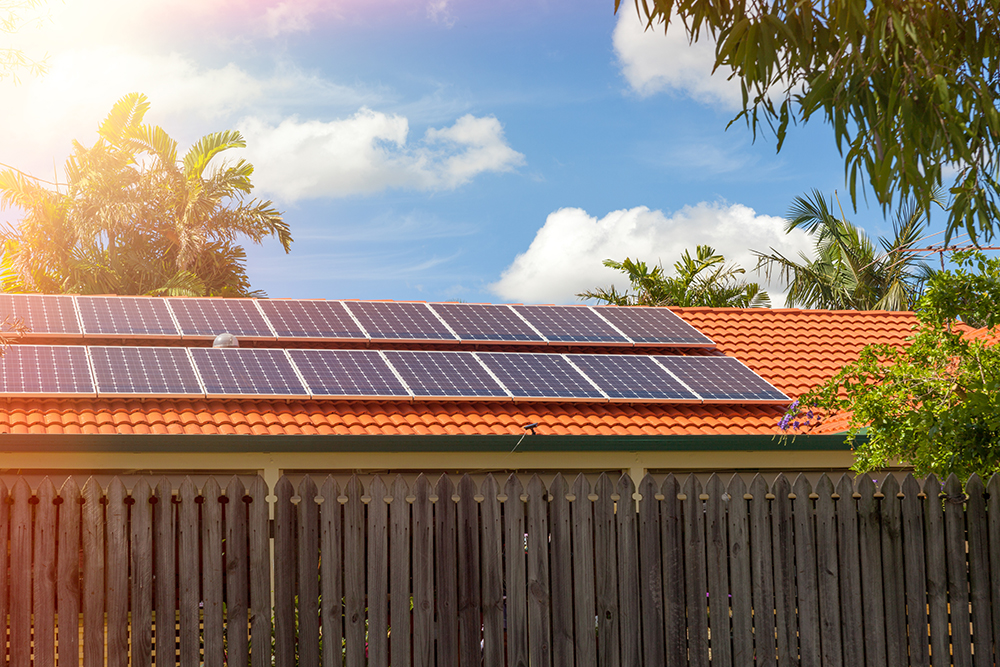
Sign up today
Make the switch to cheaper, cleaner, fairer power. Discover your prices.
My Account
Track your usage and spend, pay your bill, tell us you’re moving, and more.


Fantastic news, it’s great to hear that you’re now part of the solar community and helping the transition to renewable energy! Not only is solar energy abundant, renewable, and clean but it can also greatly assist with lowering your energy bills.
But to unlock the savings from your solar panels we need to configure your meter and system:
When a Solar System is installed or upgraded, it’s your current meter needs to be correctly configured so you receive your feed-in tariff and see a return on your investment.
Often this just means a remote reconfiguration that our team can do from their desks, but it sometimes requires a physical visit where your meter will be exchanged. This depends on where you live and what type of electricity meter you currently have installed.
Victoria
In Victoria, most meters are now smart meters. Smart meters usually just require a remote reconfiguration of your meter which takes approximately 20 business days to complete. Your feed-in tariff will start from the date the Reconfiguration Request is completed by the Distributor.
If you have a basic meter, then a Meter Exchange will need to be completed before the reconfiguration and this may add to 20 day timeframe.
It’s important to note that in Distributor Areas of Ausnet Services, Jemena and United Energy Distribution, adding solar requires the removal of any existing off-peak registers you currently have for any hot water or under-floor heating.
All Other States (South Australia, New South Wales, Australia Capital Territory, Queensland, Tasmania)
If you live outside of Victoria the meter type installed at you property can vary depending on its age.
If it’s a basic meter or digital interval meter, that requires manual meter reads and is on a quarterly billing cycle, you’ll need to exchange your current meter for a smart meter when solar is installed.
We recommend turning off the Solar System until a smart meter is installed, to prevent the meter from going backwards and inaccurate usage being recorded which may be reflected in your bill
The timeframe for the installation of a smart meter is approximately 15 business days from when the Metering Provider receives our request and there is an associated installation fee of $149. This timeframe can extend if there are access issues or other additional works identified that require more than one attendance. Your feed-in tariff will start from the date the smart meter is installed.
If you already have a smart meter, capable of remote communication, then all that’s required is a solar reconfiguration. The general timeframe for this to be completed is between 5-15 Business Days. You can also leave your Solar System on if you already have a smart meter and your feed-in tariff will be backdated to when your solar system was installed.
Usually, your solar installer will send us the below information so we can ensure your meter is configured. But we also appreciate it if you can also notify us at metering@energylocals.com.au to help avoid any potential delays.
Here’s what we need:
Victoria
In Victoria, there are five Electricity Distributors that each handles a geographic region of Victoria. If you’re unsure who your Electricity Distributor is, you can go to https://www.energy.vic.gov.au/for-households/find-your-energy-distributor to confirm.
Victoria: CitiPower, Powercor Australia and United Energy Distribution
Your Solar Installer will submit the Solar Application directly to the Distributor, nominating us as your retailer so we receive a copy of the application. To confirm the application has been submitted you can obtain a “CR-Reference” number, or “UECR-Reference” if you’re in the United network, from your Solar Installer so we can follow-up on the request.
Victoria: Jemena
Your Solar Installer needs to send us the Electrical Works Request (EWR) and the Certificate of Electrical Safety (CES). We also need a Solar Approval Reference Number which is known as the EGID Reference Number. Once we have received the two forms and this reference number, we will raise a Solar Request for you.
Victoria: Ausnet Services
Your Solar Installer needs to send to us the Electrical Works Request (EWR), the Certificate of Electrical Safety (CES) and the Distributed Energy Resources (DER) Post Installation Form Output. Once we have received these three forms, we will raise a Solar Request for you.
South Australia, New South Wales, and Australian Capital Territory
Your Solar Installer should forward their Electrical Certificate of Compliance to us, noting when the Solar System was installed. You can also notify us of the date of when the solar system was installed to progress the request.
Queensland
Your Solar Installer will submit the Solar Application directly to the Distributor, nominating us as your retailer so we receive a copy of the application. To confirm the application has been submitted you can obtain an “EWR Reference” number from your Solar Installer so we can follow-up on the request.
Tasmania
Your Solar Installer will submit the Solar Application directly to the Distributor, nominating us as your retailer so we receive a copy of the application. To confirm the application has been submitted you can obtain a “CN-Reference” number from your Solar Installer so we can follow-up on the request.
If this sounds overwhelming don’t stress. This is what we do every day so you can trust you’re in safe hands with us and we’ll provide updates along the way.
If you would like help you can contact our Aussie-based metering team at metering@energylocals.com.au for any queries. They’re always more than happy to help.
